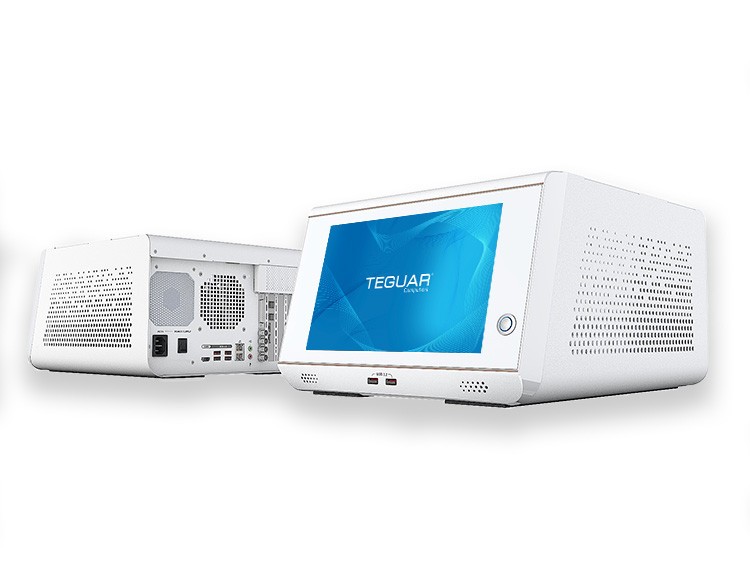Clinicians Turn to Telehealth during COVID-19 Pandemic
The use of telehealth and telemedicine is accelerating, in order to flatten the curve of Coronavirus.
 While the world faces a pandemic of previously unimaginable magnitude, we have all had to adjust to a new reality of quarantining and social distancing. Healthcare services have shifted almost entirely towards either caring for people infected by COVID-19, or working to flatten the curve, by staying at home and stopping non-essential face-to-face interaction. Fortunately, we live in a technological age when we can carry out business, social interactions, and even healthcare visits virtually.
While the world faces a pandemic of previously unimaginable magnitude, we have all had to adjust to a new reality of quarantining and social distancing. Healthcare services have shifted almost entirely towards either caring for people infected by COVID-19, or working to flatten the curve, by staying at home and stopping non-essential face-to-face interaction. Fortunately, we live in a technological age when we can carry out business, social interactions, and even healthcare visits virtually.
Virtual healthcare, also called telehealth and telemedicine, has grown quickly but steadily over the last decade. This is due to advancements in smartphone technology and mobile computing, and people coming to accept virtual contact as a standard way to communicate. Video calling among friends and family has become common, but between doctor and patient is less common. New computer hardware tends to be adopted by the consumer market first and the healthcare market last. The last few days has forced healthcare organizations to catch up. Many situations that used to require an in-person doctor visit are now being carried out via a phone or video call, or even text messaging.
What is telehealth?
Telehealth is a broad term and it can encompass a lot of different types of activities done by a healthcare professional. Telehealth is healthcare at a distance. It includes clinical services, such as a health screening or check-up, clinician training, administrative meetings, and education for physicians or patients. HealthIT.gov distinguishes telehealth from telemedicine, saying that telehealth “refers to a broader scope of remote healthcare services than telemedicine.” Telemedicine refers only to remote clinical services.
Can telehealth flatten the curve?
 The days of going to a doctor’s office for a non-serious illness or aliment are coming to an end. Allergies, pink eye, a rash, and behavioral health can all usually be assessed over video. Clinicians can prescribe treatment and even have prescriptions mailed right to the patient, without ever meeting with the patient in-person.
The days of going to a doctor’s office for a non-serious illness or aliment are coming to an end. Allergies, pink eye, a rash, and behavioral health can all usually be assessed over video. Clinicians can prescribe treatment and even have prescriptions mailed right to the patient, without ever meeting with the patient in-person.
While COVID-19 is still spreading like wildfire, people are utilizing video conferencing to diagnose non-serious issues, allowing patients and healthcare professionals to stay in their own homes. Keeping more people away from hospitals and clinics helps reduce the spread of the virus and it also frees up resources to treat COVID-19 patients. By staying at home as much as possible, we can “flatten the curve,” in other words, reduce the height of the peak of this pandemic.
(Graph from The Economist)
How to set up a telehealth system.
The American Medical Association (AMA) released a quick guide to telemedicine, in response to the Coronavirus pandemic. Start with this guide and when you’re ready to choose computer hardware for your new telehealth infrastructure, read Teguar’s telehealth device requirements. It is important to choose reliable computer hardware and software because it may not be possible for a technician to come out and service the computer, if it malfunctions. You also want your telehealth system to last long past the COVID-19 pandemic, so choose computer hardware on an embedded roadmap.
Teguar Computers used for telehealth
 Teguar Tablet PCs, Medical Cart Computers and All-in-One Medical PCs are all used in various telehealth applications. To learn more visit our Telehealth Application Page.
Teguar Tablet PCs, Medical Cart Computers and All-in-One Medical PCs are all used in various telehealth applications. To learn more visit our Telehealth Application Page.
See our full medical computer line up and contact us to request a demo or discuss your project.
Sources:
https://www.healthit.gov/faq/what-telehealth-how-telehealth-different-telemedecine
https://www.economist.com/briefing/2020/02/29/covid-19-is-now-in-50-countries-and-things-will-get-worse
https://www.ama-assn.org/practice-management/digital/ama-quick-guide-telemedicine-practice
Previous Article
Increased Need for Teguar Rugged Tablets with Bluetooth for Telehealth











